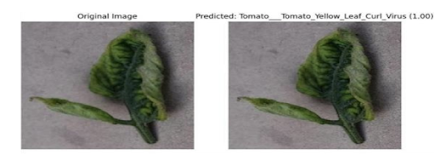FLOWER PLANT DISEASE DETECTION
FLOWER PLANT DISEASE DETECTION
INTRODUCTION
Agricultural production is fundamental for global sustenance, impacting humans and animals alike. Government initiatives bolster food security, yet plant diseases threaten crops and ecosystems. Early detection is vital, sparing extensive losses. Farmers must judiciously apply insecticides, seeking expert guidance to mitigate chemical misuse. Research focuses on aiding agriculture, leveraging innovations like automated disease detection tools powered by deep learning. Deep Convolutional Neural Networks discern between healthy and diseased leaves swiftly and accurately, aiding both small and large-scale farming. These advancements promise precise interventions, crucial for combating food insecurity amidst evolving climates and natural disasters.
SYSTEM DESIGN
Utilizing Convolutional Neural Networks (CNNs), researchers have made significant strides in image-based diagnosis for detecting plant leaf diseases. CNNs excel in automatically learning intricate features from input images, enhancing system performance. The process begins with capturing high-resolution leaf images displaying disease symptoms, followed by preprocessing steps like normalization and augmentation to ensure data quality and diversity. Evaluation of the trained model involves assessing metrics such as accuracy, precision, recall, and F1 score using validation and testing datasets. Efficiency is gauged by factors like computational complexity, training time, and inference speed, with fine-tuning of hyperparameters and optimizing model architecture crucial for achieving accuracy while maintaining computational efficiency.
SEQUENCE DIAGRAM
A sequence diagram is a Unified Modeling Language (UML) diagram that
illustrates the sequence of messages between objects in an interaction. A sequence
diagram consists of a group of objects that are represented by lifelines, and the
messages that they exchange over time during the interaction.
The below sequence diagram shows how an answer asked by the user is being
fetched from internet. The audio query is interpreted and sent to Web scraper. The
web scraper searches and finds the answer. It is then sent back to speaker, where it
speaks the answer to user.
IMPLEMENTATION
To develop an image-based diagnosis system for plant leaf disease detection, a robust approach utilizing Convolutional Neural Networks (CNNs) was deployed. Initially, a diverse dataset was collected, encompassing images of healthy leaves and those afflicted by various diseases, ensuring comprehensive representation for effective model training. Extensive data preprocessing ensued, involving techniques such as image resizing, normalization, and augmentation to bolster the model's generalization capabilities. The focal point was selecting a suitable CNN architecture for image classification, with consideration given to efficiency, such as models like MobileNet or EfficientNet. The model was configured to accommodate different classes corresponding to various plant diseases and healthy leaves. Training involved dividing the dataset into training, validation, and testing sets, fine-tuning the model based on validation performance, and optimizing hyperparameters including learning rates, batch sizes, and optimizers to enhance model accuracy.
RESULT
Training accuracy measures the proportion of correct predictions within the training dataset, indicating the model's performance on familiar data. However, excessively high training accuracy does not ensure good generalization to new, unseen data.Validation accuracy assesses the model's performance on fresh, unseen data, indicating the proportion of correct predictions in a separate validation dataset. It's essential for evaluating the model's ability to generalize beyond the training data, aiding in model selection and hyperparameter tuning.Training loss quantifies the disparity between the model's predictions and the actual targets in the training data. Lower training loss suggests better alignment between predictions and training data, yet extremely low training loss may signify overfitting.
Validation loss measures the error between the model's predictions and the actual targets in the validation dataset, crucial for evaluating the model's generalization ability. It guides the selection of models or hyperparameters that yield optimal performance on new, unseen data.
OUTPUT SCREEN
CONCLUSION
In the realm of plant disease detection and classification, numerous methods have been developed, but the quest for an efficient commercial solution persists. Our study compares four Deep Learning Models (VGG11, VGG13, VGG16, VGG19) using healthy and diseased-leaf images. After selecting the optimal VGGnet model, we benchmarked it against existing CNN Models. Utilizing a standard Plant disease dataset of 87,000 RGB images captured under controlled conditions, featuring 38 different classes across 14 species, we achieved a remarkable 98.51% accuracy with the VGG19 model. Compared to alternative deep-learning approaches, our model exhibits superior predictive performance in accuracy and loss metrics. The integration of Global Average Pooling (GAP) into the VGG19 architecture emerges as pivotal, enhancing efficiency, interpretability, and generalization. By reducing dimensionality, enhancing translation invariance, and promoting feature interpretability, GAP significantly contributes to our model's success. Its computational efficiency and memory-saving attributes position GAP as a crucial component for real-world deployment, propelling the development of a commercially viable solution for precise and reliable plant disease identification.







Comments
Post a Comment